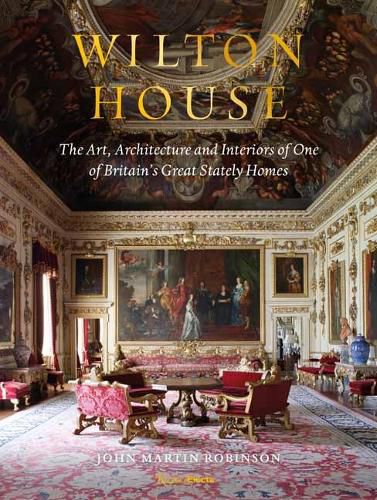Readings Newsletter
Become a Readings Member to make your shopping experience even easier.
Sign in or sign up for free!
You’re not far away from qualifying for FREE standard shipping within Australia
You’ve qualified for FREE standard shipping within Australia
The cart is loading…






Wilton House in Salisbury, England, has been the ancestral home of the Earl of Pembroke for nearly 500 years and boasts one of the most fascinating and varied histories of all Britain’s historic houses.
Shaped over centuries by the most significant names in architecture and interior design, Wilton is known as the finest example of Palladian architecture in England, with interiors by Inigo Jones and John Webb, furniture by William Kent and Thomas Chippendale, and unparalleled collections of both classical sculpture and Old Master paintings - with masterpieces by Raphael, Titian, Rembrandt, and Tintoretto among its rooms.
The book explores the development of the house and its collections, from the Van Dyck paintings in Jones’s remarkable Single and Double Cube state rooms to the Arundel marbles housed in James Wyatt’s Gothic-revival cloisters. With a foreword by the Earl of Pembroke, a revelatory text by the historian John Martin Robinson, and imagery drawn both from Wilton’s private archives and from eminent architectural and interiors
$9.00 standard shipping within Australia
FREE standard shipping within Australia for orders over $100.00
Express & International shipping calculated at checkout
Wilton House in Salisbury, England, has been the ancestral home of the Earl of Pembroke for nearly 500 years and boasts one of the most fascinating and varied histories of all Britain’s historic houses.
Shaped over centuries by the most significant names in architecture and interior design, Wilton is known as the finest example of Palladian architecture in England, with interiors by Inigo Jones and John Webb, furniture by William Kent and Thomas Chippendale, and unparalleled collections of both classical sculpture and Old Master paintings - with masterpieces by Raphael, Titian, Rembrandt, and Tintoretto among its rooms.
The book explores the development of the house and its collections, from the Van Dyck paintings in Jones’s remarkable Single and Double Cube state rooms to the Arundel marbles housed in James Wyatt’s Gothic-revival cloisters. With a foreword by the Earl of Pembroke, a revelatory text by the historian John Martin Robinson, and imagery drawn both from Wilton’s private archives and from eminent architectural and interiors